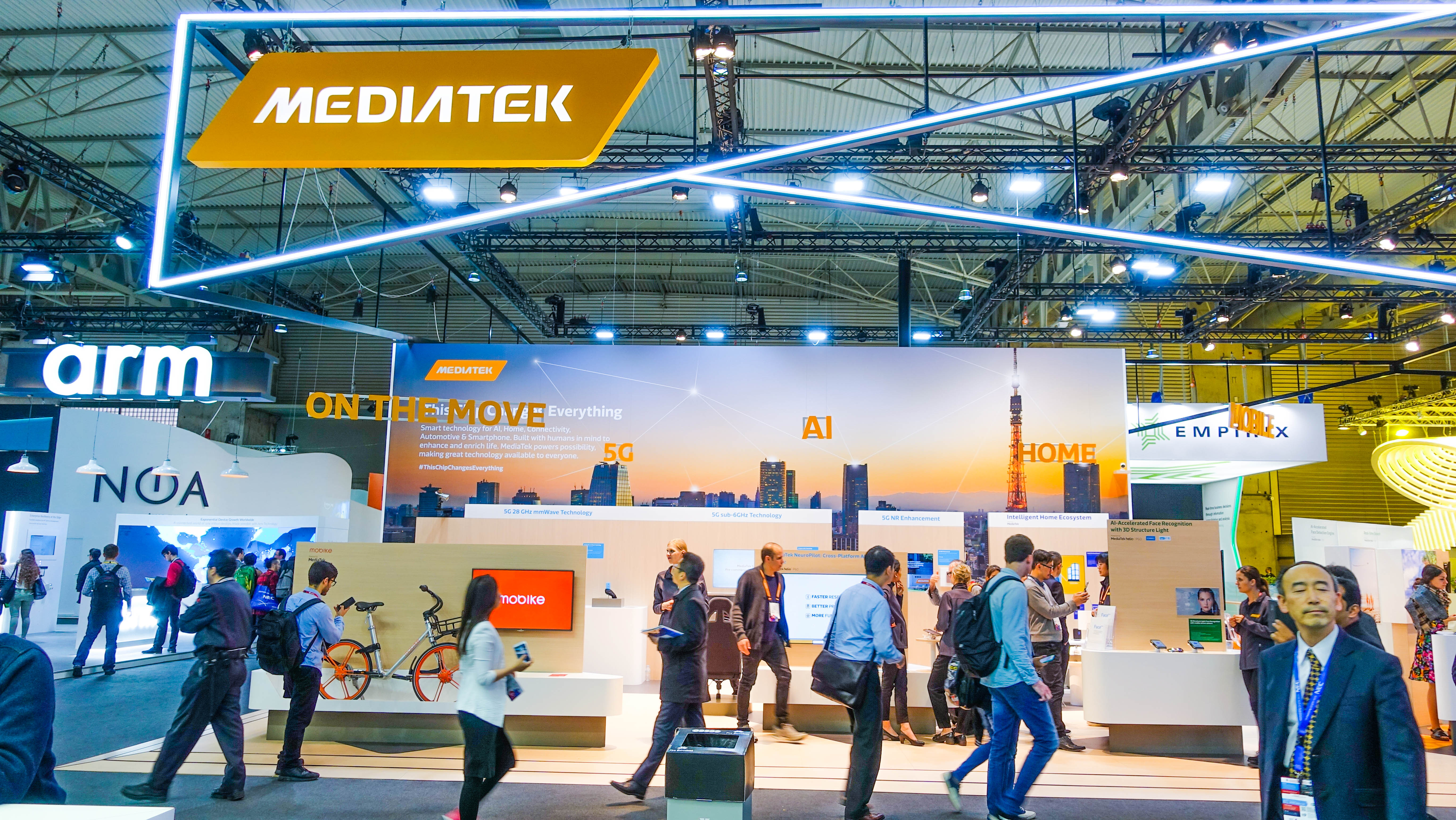You're paying too much for your smartphone, says MediaTek
Are you buying phones with features you’ll never use?

You're paying too much for your smartphone, whether it's the iPhone X, Samsung Galaxy S9 or even the mid-range-priced OnePlus 5T, says chipmaker MediaTek.
The Taiwanese semiconductor company is preparing its Helio P60 chipset, which it says will power “the new premium” tier of smartphones, promising more value for your money. It defines “the new premium” as phones with far cheaper prices, yet few sacrifices when it comes to core features you actually care about.
MediaTek sees significant demand among consumers who want a powerful enough device, but aren’t pining for costly extras, like cutting-edge VR they’ll seldom use, or flashy 5G speeds still unavailable in everyday scenarios.
“I think we’ve reached some inflection point in the industry,” said Finbarr Moynihan, MediaTek’s General Manager of Corporate Sales, to TechRadar. “Of course, the flagships will have their spot and keep advancing the technology, but somehow the experience and value for money equation is starting to resonate with consumers.”
The ‘Moneyball’ of smartphones
There's noticeable hesitation among upgraders we have talked to when it comes to the iPhone X price. Apple’s new flagship starts at $999 (£999, AU$1,579), and that’s been a sticking point for many. The Samsung Galaxy S9 and S9 Plus just went on sale worldwide and also present everyone with a pricey predicament.

At the same time, cheaper phones have become comparable when it comes to features and performance that users can’t live without, and they’re now inheriting flagship-level perks like 18:9 all-screen displays and dual-lens cameras.
“For a certain category and a certain price point, we can do a better job [than flagship phones] at delivering a superior user experience at an affordable price,” suggests Moynihan. Breaking down the performance for price equation, he thinks MediaTek comes out ahead, noting, “It’s almost like benchmarks per dollar.”
Sign up for breaking news, reviews, opinion, top tech deals, and more.
“It’s almost like benchmarks per dollar.”
Finbarr Moynihan, MediaTek
MediaTek's strategy is similar to the Moneyball theory, baseball managers’ unconventional stats-driven idea of valuing players with good on-base percentage (an overlooked and rather boring stat), instead of relying on one or two expensive home run hitters that blow their team's salary cap. Building an entire team that gets on base can still drive in those all-important runs, even if none of the players make big headlines or become overvalued hometown superstars.
“Moneyball is a good analogy,” said Moynihan. MediaTek similarly sees room to build a chip that offers enough performance and undervalued core features, like improved battery life and more powerful cameras, without the excess that leads to shockingly high prices, like Quad HD screens for VR and 5G-ready modems. No, they won’t make headlines like Animoji, but day in and day out, users primarily care about battery life and photo quality.
5G and VR are things that MediaTek is working on, but those are features likely for its Helio X-series chips or later P-series chipsets, not for this lower price point in 2018.
Fair compromise? More battery life, less VR and 5G
Battery life is where MediaTek sees its on-base percentage-like hidden value. Its Helio P60 chipset can achieve 12% power savings overall and a 25% power savings during intense tasks like 3D gaming, while its CPU and GPU see a 70% uptick in performance. Its CorePilot technology promises to better distribute workloads to the eight-core chipset in order to optimize performance.

Of course, we’ve been promised 30% power savings before from various chipmakers, and more power-hungry devices and apps every year continue to make those sorts of gains negligible. So we’ll have to see how P60 devices perform when they do launch.
MediaTek is still offering some flashier headline features, too: dual-rear cameras up to 16MP and 20MP, or a single camera up to 32MP; a tall display that maxes out at a 20:9 aspect ratio in Full HD+; and AI for advanced facial and object recognition. It’s, of course, up to manufacturers to deliver on these specs in their individual phones.
So where are these smartphones?
It's MediaTek’s 12nm Helio P60, not its higher-end 10nm Helio X30, that the company believes will resonate most with a worldwide audience. It likes to cite that 48% of smartphones came from Chinese manufacturers in 2017, and those phones were largely aimed at emerging markets. MediaTek, Qualcomm and Huawei are big winners here.

There are no smartphones powered by the new Helio P60 yet, but MediaTek counts partners like Lenovo, Oppo, Gionee, Meizu and Xiaomi as part of “the new premium” boom set to sweep the smartphone world. We’ll see P60 phones in the coming months, and the prices promise to be reasonable.
“There’s always a consumer who is going to look for a $100 phone that’ll do the bare minimum,” said Moynihan. “There’s always going to be the consumer who’s happy to pay $1,000 to $1,200 for the iPhone X. There’s a lot of space between those two.”
Its “new premium” phones, according to MediaTek, will land between $200 (about £140, AU$250) and $400 (about £285, AU$500), or between the cost of an entry-level Alcatel smartphone and the iPhone SE.
MediaTek's biggest challenge is a dragon
It’s not like there aren’t smartphones that occupy this territory already, somewhere just below OnePlus 5T, ZTE Axon 7 and Honor View 10 launch prices.

The Moto G5 and Moto G5S Plus, for example, have been among our favorite cheap phones in the last year, and new affordable options like the Asus Zenfone 5 Max launched at MWC 2018 with a Snapdragon 660 chip from Qualcomm, MediaTek’s chief rival.
It’s easy to dismiss MediaTek given its past. It’s been seen as less ‘premium’ than Qualcomm, especially in Western markets. Moynihan was ready with an answer to that assessment.
“To be blunt about it, there are still parts of the market where we have brand perception issues. Some of it is probably not fair,” he said. “Some of it is perception and $100 million of Snapdragon marketing."
Moynihan concluded, “At the end of the day, these new premium devices have to speak for themselves. The devices are the ones that have to do the ultimate talking.”
